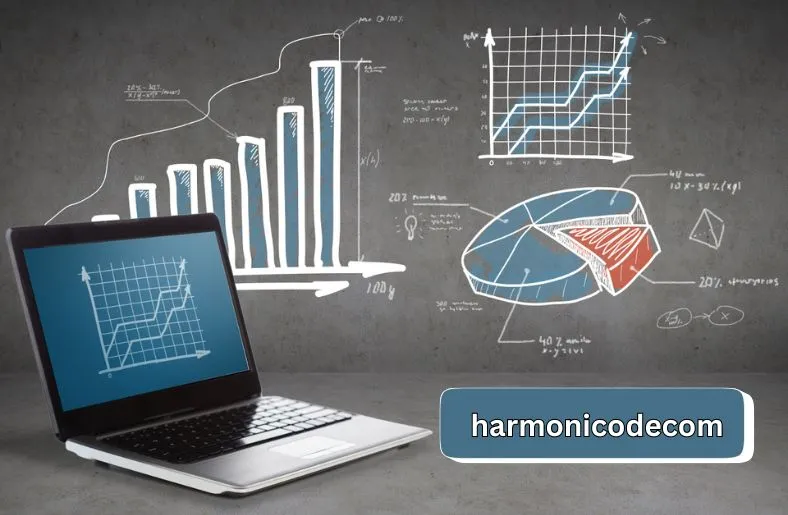Introduction
Welcome to the world of Harmonicodecom, where complex data analysis becomes effortless. With Harmonicodecom, deciphering intricate datasets is as simple as pie. This revolutionary tool streamlines the process of understanding data patterns. As we embark on this journey, let’s explore how Harmonicodecom revolutionizes the way we analyze data.
In today’s fast-paced digital landscape, data analysis is paramount. However, deciphering complex datasets can be daunting. Enter Harmonicodecom, a game-changer in the realm of data analysis. This innovative tool simplifies the process, making it accessible to everyone.
Gone are the days of grappling with convoluted data structures. Harmonicodecom breaks down data into digestible components, unveiling hidden insights. From financial modeling to image analysis, Harmonicodecom finds applications across diverse fields.
Join us as we delve into the essentials of Harmonicodecom and discover how it simplifies data analysis. Whether you’re a seasoned data analyst or a novice, Harmonicodecom empowers you to unlock the full potential of your data.
Understanding Harmonicodecom
Now, let’s delve into the essence of Harmonicodecom and how it simplifies data analysis. Harmonicodecom, at its core, is a revolutionary tool designed to unravel complex datasets effortlessly. By leveraging advanced algorithms, Harmonicodecom breaks down intricate data structures into manageable components.
Essentially, Harmonicodecom operates by decomposing complex signals into simpler, sinusoidal components. This process, rooted in Fourier analysis, identifies fundamental frequencies and their respective characteristics. Through the Fourier Transform, time-domain data is converted into frequency-domain data, facilitating a deeper understanding of the underlying patterns.
The beauty of Harmonicodecom lies in its versatility. Whether it’s financial modeling, image analysis, or speech recognition, Harmonicodecom finds applications across various domains. Its ability to analyze large datasets efficiently makes it indispensable in today’s data-driven world.
Moreover, Harmonicodecom integrates seamlessly with machine learning models, enhancing predictive capabilities. By training algorithms on decomposed harmonic components, it achieves higher accuracy in forecasting and anomaly detection.
Transitioning from theory to practice, Harmonicodecom simplifies data analysis for users of all skill levels. Whether you’re a seasoned data scientist or a beginner, Harmonicodecom empowers you to extract meaningful insights from your data.
Core Components of Harmonicodecom
Now, let’s explore the fundamental elements that constitute Harmonicodecom. At its heart, it comprises several key components that work seamlessly together to simplify data analysis.
Firstly, we have the signal analysis component, which forms the foundation of Harmonicodecom’s functionality. This component involves the examination of signals from various sources, such as audio recordings or financial time series.
Next, we encounter the Fourier Transform, a pivotal tool in Harmonicodecom’s arsenal. This transformative operation converts time-domain data into frequency-domain data, enabling the identification of different frequency components within the signal.
Moving forward, we delve into the realm of advanced algorithms, which play a crucial role in enhancing the accuracy and efficiency of Harmonicodecom. These algorithms, including the Wavelet Transform and Empirical Mode Decomposition, are adept at handling non-linear and non-stationary signals.
Additionally, it boasts integration with machine learning models, elevating its capabilities to new heights. By training algorithms on decomposed harmonic components, predictive models achieve higher accuracy and robustness.
Each of these components contributes to the overall efficacy of it, empowering users to extract meaningful insights from their data. From signal analysis to machine learning integration, it offers a comprehensive solution for data analysis needs.
Applications of Harmonicodecom
Now, let’s delve into how Harmonicodecom is applied across various domains, simplifying data analysis processes.
In the realm of audio and speech processing, Harmonicodecom plays a vital role. By breaking down audio signals, it enables high-fidelity audio compression and noise reduction.
Similarly, in image analysis, it enhances pattern recognition and edge detection. This is particularly beneficial in medical imaging for detecting anomalies like tumors.
In financial modeling, Harmonicodecom aids in analyzing financial time series data. It helps identify cyclical patterns and potential turning points in markets.
Furthermore, in the analysis of biological data, it assists in identifying physiological patterns and abnormalities. This is crucial in medical diagnostics for conditions like epilepsy.
Across these applications, it simplifies data analysis, providing deeper insights and facilitating informed decision-making. Its versatility and effectiveness make it an invaluable tool in various fields.
Advantages of Harmonicodecom
Harmonicodecom offers a plethora of benefits that make it a valuable tool for data analysis. One of its key advantages is the enhanced data insights it provides. By breaking down signals into their fundamental components, Harmonicodecom helps users identify patterns and trends that may not be apparent in raw data alone.
Another advantage of it is its efficiency. With advanced algorithms and computational techniques, it can process large datasets quickly and accurately, making it ideal for applications where real-time analysis is crucial.
Additionally, Harmonicodecom is versatile, as it can be applied to a wide range of data types and fields. Whether you’re working with audio recordings, financial time series, or biological data, it can help you gain valuable insights from your data.
Integration with machine learning models is another key advantage of it. By training algorithms on decomposed harmonic components, users can achieve higher accuracy and robustness in their predictive models.
Overall, it is a powerful tool that simplifies data analysis and provides users with deeper insights into their datasets. Its efficiency, versatility, and integration with machine learning make it a valuable asset for researchers and professionals alike.
Challenges and Future Directions
As with any innovative endeavor, Harmonicodecom faces its fair share of challenges and exciting prospects for the future.
One prominent challenge is computational complexity. Analyzing large datasets with advanced algorithms demands substantial computational resources.
Another hurdle lies in ensuring data quality. Accurate and clean data are vital for meaningful results, necessitating thorough preprocessing and cleaning.
Integration with existing systems poses another challenge. Compatibility and seamless integration are crucial for leveraging the full benefits of Harmonicodecom.
Looking ahead, future directions for Harmonicodecom are promising. Ongoing research aims to address current challenges and expand its applications.
Enhanced algorithms represent a potential breakthrough. Continued development could lead to more efficient and accurate harmonic decomposition.
Real-time processing is also on the horizon. Advancements in computational power could enable real-time analysis of complex datasets.
Furthermore, it may find broader applications in fields such as environmental monitoring and cybersecurity.
Integration with AI holds immense potential. Deeper integration with machine learning models could enhance predictive and analytical capabilities.
Conclusion
In conclusion, Harmonicodecom stands as a beacon of innovation in the realm of data analysis. With its ability to simplify complex datasets and extract meaningful insights, it empowers users across diverse fields. From audio processing to financial modeling and beyond, it revolutionizes the way we understand and interpret data. Its efficiency, versatility, and integration with machine learning underscore its value in today’s data-driven world. While challenges exist, the future of it is bright, with ongoing research promising further advancements and expanded applications. As we continue to explore its potential, it remains at the forefront of modern data analysis.





